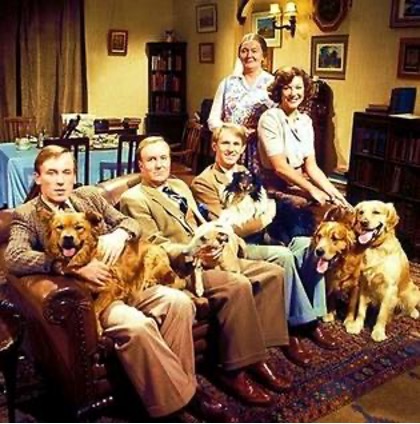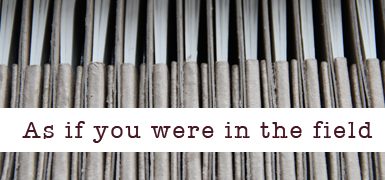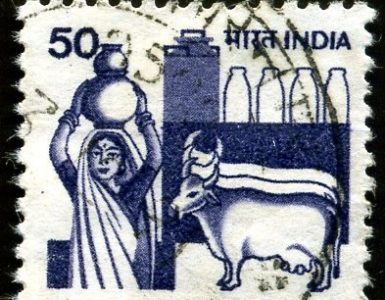Sam Hillyard
What is the work of vet’s work and why are they in short supply. Vet professionals have long acknowledged there is a staffing shortfall. The Covid 19 pandemic has exacerbated the problem. Here I look at vets in a global context, as subject to consumer capitalism, and through an examination of the minutiae of their – dangerous and dirty – everyday practice.
Of all the weird and not-so-wonderful consequences of the global pandemic, Barnard Castle tourism aside, a rise in animal ownership has been one. This pet boom has led to a crisis within the veterinary profession as they struggled to meet the surge in demand. The veterinary profession is well-established. The Royal College of Veterinary Surgeons was granted its royal charter in 1844 (rcvs.org.uk) and some of the oldest universities in England, Scotland and Ireland provide training (vetschoolscouncil.ac.uk). The British vet is also much loved, as the popularity of (both) series All Creatures Great and Small (1978-1990, 2020) based on the novels by the late vet Alf Wight testify. So, why the dearth of vets? What has happened to them all?
Pet boom
The president of a Canadian veterinary association argued the shortage problem is not new but has existed throughout her career and is now of global concern (Stiles 2014:441). The reasons are not a straightforward issue, but represent a ‘wicked problem’ of overlapping issues. Some of these sit outside of the profession (rising incomes and population = more pets), but she dismisses accusations from within that young vets are workshy.
Indeed, data from her own organisation showed early career vets worked the longest hours. Scottish vets have concurred, highlighting how long hours lead to a problematic work/ life imbalance and poor mental health (Stephen et al. 2020). Old working practices involving a 60-hour week and being on-call for six of them is, as Stiles quite rightly puts it, is “OVERDOING IT” (Stiles 2021:442), original emphasis).
The knowledge that a quarter of vets had considered suicide in the last year compared to a population average of 10% is sobering. Solutions from within the profession have included streamlining and efficiency, including the utilisation of supporting professions and a consensus that more vets need to be trained. Some have delivered tangible mechanisms to aid retention, such as a Scottish study which produced a smartphone app designed to help intervene when negative aspects of everyday practice outweighed the positive.
The insiders view of the profession serves to make it clear that vet work is extraordinarily diverse. It includes a wide variety of species (great and small) and hence treatment (inoculation and testing; and diagnosis/ treatment). Vets’ working conditions vary enormously (consulting room to cow byre) and emergency service hours are inherently antisocial. Such variety makes up the small triumphs and disasters, as Alf Wight put it, of everyday life as a working vet.
The need to recruit more vets and the complexity of their work are therefore two sides of the same coin or ‘wicked problem’. One clear tension is the rise in small animal practice. As one vet put it, “I swapped over to the dark side and am a very happy, satisfied, non-stinky smallies vet” (Adam et al. 2018:5). Indeed, Alf Wight’s former practice recently transitioned to specialise in small animals. This move led to one of Wight’s trainees to leave the practice.
So to understand vets is hence to grasp the corporeal nature of their work, the ‘intangibles’ of practice life and vets’ own values. Vet Remnant (2021), in a solutions-focused piece, is clear on the latter. Vets’ work sits inside the delivery of a safe and affordable food chain. Recruitment therefore needs to include outreach work in schools and advocacy of both the farming and the veterinary professions – including to those with non-farming backgrounds.
Inside the vets’ worlds
Vets’ working lives need to be understood as part of a wider canvas. Rural geographer Enticott (2019:720) captured this assemblage as the “veterinary world of work” after Becker. They are a profession working alongside supporting professions (veterinary nurses and technicians) and benefit from new technologies (i.e. pregnancy testing). Vets’ worlds and careers are subject to global forces and inevitably Brexit. Enticott suggested a new kind of language to capture this interplay – disease ecology:
In this historical work of the veterinary profession, disease ecology is […] similar to assemblage thinking and the kind of relational theory found within post-structural analyses of animal health […] [Disease ecology] allows veterinary professionalism to be conceived of as a relational achievement, emergent from and produced by a range of human actors, animals, technologies and institutions that are held to together in a ‘veterinary world of work’ (see Becker 1982). The focus becomes one of understanding the processes and practices […] this veterinary world of work attends to, the multiplicity of different forms of veterinary knowledge and subjectivity, the contests between them, and the characteristics and capabilities of different actors (Enticott 2019:720, emphasis added).
Vets’ worlds therefore merit sociological scrutiny beyond the possibilities of their own professional reflexivity. Such scrutiny may yield a different kind of knowledge. By way of example, Enticott (2012) studied bovine tuberculosis testing procedures. He found, of over 77,000 bTB tests conducted by nearly nine hundred vets, gender was the only social variable:
Overall these data suggest that male vets are more likely to identify infected cattle than female vets during a bTB test […] disease reporting could vary considerably simply because of the gender of the vet conducting disease surveillance (Enticott 2012:563).
In the same way sociologists of law have found that the apparel of a defendant and the timing of hearings matter, vets’ subjective judgement and organisational cultures vary and matter, too. In the context of the wake of a global pandemic, sensitivity towards and confidence in testing and the professionals who carry out that testing has never been more acute.
Sociologists of work have established that 21st work is no longer bound by time or location. Work permeates our non-cognitive occupation of space and discretional effort and corporate responsibility are now commodified. For example, Lyon and Back’s (2012) study of two fishmongers market stalls saw them vis-à-vis their communities and, too, communities undergoing change. The veterinary profession has inevitably been exposed to these shifts, the question is with what specific and impact.
Enticott discussed emotional labour, after Hochschild (1983), and noted the lack of relational distance between vets and farmers. Whilst not a new concept, emotional labour must now be linked to present-day consumer culture (Pettinger 2011). Indeed, the Royal College of Veterinary Surgeons homepage includes the link ‘want to raise a concern about a vet or a vet nurse?’ (rcvs.org.uk). Paying for/ valuing authenticity the most, as it were. In 21st century work, the power of the service user must be recognised, even for non-human exchanges:
‘Good workers’ are labelled professional precisely when they do more than just the job, in offering gifts beyond the market. Customers may expect workers to know what their desires are without these being fully verbalised. This reflects customers’ implicit presumption of their own sovereignty and belief that they are themselves straightforward. […] service encounters are managed by customers as well as workers and management, and that customers’ judgements, which draw on gendered norms, affect market practices. […] Customers, in their interactions with service providers, are demanding and judgemental, and ‘make’ the encounter. We cannot understand the experience of service work without knowing this. (Pettinger 2011:239, emphasis added).
Vets’ worlds are corporeal, involve human and non-human actors and are often out in the natural environment:
Decentring humans to understand them as part of natural, technical, informational and economic entities is essential to relearning the position of the human. Decentring unmasks the idea of autonomous human activity and reveals human dependency on nature. Nature affects everyday life in dramatic ways through ‘natural’ disasters and in routine and habitual ways. It is not a pre-given entity on which humans act. Nature has temporalities and material effects, it incorporates the existence and effects of human and nonhuman bodies, and it brings the unpredictability of weather, the transforming power of soil, coal and rare earth minerals (Pettinger 2019:157, emphasis added).
Vets are, perhaps more so than any other profession, inside this nexus. Sociology can also be used to mine down into the nuances of the social setting – and reposition the vet within this assemblage.
Chicago interactionist, Sanders (2010) has explored the nuances of companion animal-human interactions. His exploration of the social world of large veterinary clinics showed the consultancy room had a sad and dangerous character and, too, involved an investment of self. A dog owner himself, Sanders (2010) detailed the highs and lows of veterinary work firsthand. The dirty work of handling treated and infected animals and dog waste and disposal (he described washing his hands when he leaves and his worry that he might bring a disease home to his own young puppy). Plus, the decision-making process to euthanise an 11-year-old German Shepherd cross bitch after a series of treatments. Too, he captures the ‘high’ of little ‘runty’ shepherd pups being brought to life during a caesarean.
This work was inherently interactive and an accomplishment of social rituals and routines interlocking both human and non-human actors. The emotional work was performed by both the vets’ and their technicians’. Their occupational worlds involve managing such encounters and also doing some of their work backstage (i.e. cremations, autopsies). Their work involves the management of emotional highs and lows and coping strategies. Working dog literature has long discussed this partnership (Moxon 1978, Cox 2014). There is scope to explore this further in veterinary contexts.
The rural dimension
And to finally muddy the waters, vets work often takes place in rural spaces. The localities of workplaces used so far in the article have been fishmongers and sex work, but the rural dimension has proven critical for other rural professions. Rural professionals’ status inside their workplace communities is distinctive and nuanced. My own work on headteachers of rural primary schools showed how much had changed for rural teachers and that they too face a recruitment problem. Tied accommodation and long service have disappeared (Hillyard and Bagley 2013), but some welcomed more professional distance (and the anonymity to put their rubbish out in their dressing-gown, as one head put it). The intensity of role vis-à-vis salary scales has led to federated headteachers who oversee a number of schools.
Local spatial contexts are critical, too. Remoteness and climate vary considerably. In Nordic countries, remote summer homes are inaccessible in the winter months, very different to the 80% second-homes villages of England’s rural coastline. The former are unreachable, the latter ghost towns outside the season. The rural community within which veterinary work takes place is therefore nuanced. Whilst the spatial layout of a village would be of less relevance to vets than the local head, are vet’s community relationships inherited and what of their own organisational cultures and relationship with the local economy?
To end on the thorniest of debates, there is the enduring question of what is the rural? This Special Issue had the ambition to look at rural issues afresh. What is all-too-dominant (monocultural vistas), what is less-than-tangible (ecotherapy) and territorial domains of food sources (wild or produced). All are rural, but too demonstrate the sheer diversity of practices and processes.
In recent work, drawing upon both W.I. Thomas’s theorem and Halfacree’s threefold architecture, I argue that definitions of the rural are plural. That is, metaphorically, they are in the eye of the beholder. Regardless of their accuracy, they are acted upon. As one village ‘old boy’ describe of newcomers to the village when he greeted them on the street, “sometimes they speak, sometimes they don’t.” The discussion as highlighted the new importance of the audience (the consumer) for the veterinary profession and situated their work on a wide, global canvas. We need, too, to explore the possibility of taking all players seriously, including the non-human actors.
References
Cox, G. (2014) The gun’s dog. Cheltenham: Pernice Press.
Enticott, G (2012) “Regulating animal health, gender and quality control: a study of veterinary surgeons in Great Britain.” Journal of Rural Studies 28(4):559-567. https://doi:10.1016/j.jrurstud.2012.05.004
Hillyard, S. (2020) Broadlands and the new rurality: an ethnography. Bingley: Emerald.
Hillyard, S. & Bagley, C. (2013) “‘The fieldworker not in the head’s office’: an empirical exploration of the role of an English rural primary school within its village,” Social & Cultural Geography, 14:4, 410-427, https://doi.org/10.1080/14649365.2013.779743
Moxon, P.R.A. (1978, 12th edition) [1952] Gundogs: training and field trials. London: Popular Dogs.
Pettinger, L. (2011) “‘Knows how to please a man’: studying customers to understand service work.” The Sociological Review 59(2):223-241. https://doi.org/10.1111%2Fj.1467-954X.2011.02005.x
Pettinger, L. (2019) What’s wrong with work? Bristol: Policy Press.
Remnant, J. (2021) “How can we create a sustainable future for farm animal veterinary practice?” Veterinary Record, 189(9):371-372. https://doi.org/10.1002/vetr.1156
Sanders, C. (2010) ” Ethnography as dangerous, sad, and dirty work” In Hillyard, S. (ed.) New Frontiers in Ethnography. Bingley: Emerald. Pp. 101-124. http://dx.doi.org/10.1108/S1042-3192(2010)0000011009
Stephen, K., Henry, MK., Baughan, J., Duncan, AJ., & Bishop, HKB. (2020). An exploration of how vets cope with the daily challenges of farm animal practice and how best these coping mechanisms might be developed into tools which can be easily accessed by the livestock veterinary community. Sarah Brown Mental Health Research Grant. Available at: https://pure.sruc.ac.uk/en/publications/c41c1ef6-a76b-4423-831d-6cd9d9a84603
Stiles, E. (2021) “The “wicked” problem of our workforce shortage.” The Canadian Veterinary Journal 62(5):441. PMCID: PMC8048204

Sam Hillyard is Professor of Sociology in the School of Social and Political Sciences, University of Lincoln, UK, where she teaches sociological theory and methods. She is series editor of Studies in Qualitative Methodology (Emerald) and a member of the editorial board of the journal Qualitative Research. Her current research includes work with rural GPs and colleagues in Lincoln’s International Institute for Rural Health.
Header Image Credit: BBC: Cast of All Creatures Great and Small (TV series)
TO CITE THIS ARTICLE:
Hillyard, Sam 2022. ‘Rural vets: what has happened to them all?’ Discover Society: New Series 2 (1): https://doi.org/10.51428/dsoc.2022.01.0005




